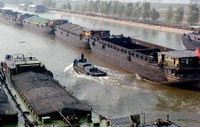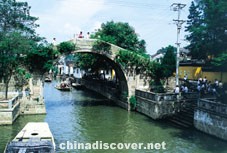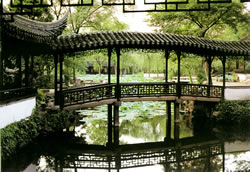Grand Canal

Overview
As the longest man-made waterway as well as being the greatest in ancient China, the Grand Canal certainly lives up to its moniker, stretching 1,764km,it's ten times longer than the Suez Canel and twenty times that of the Panama Canal.
Running from Hangzhou, Zhejiang Province in the south to Beijing in the north of China and connecting different river systems, the Grand Canal contributed greatly to ensure that the Chinese primary economy thrived in past dynasties. Now more than 2000 years old, some parts of the canal are still in use, mainly functioning as a water-diversion conduit.
Know more
It took several dynasties to build the massive canal network. Work began as early as 506 B.C during the Spring and Autumn period lead by King Wu, who led his people to dig the first canals in a big to control central China. Since most of China's major rivers flow from west to east, building a water ink from north to south to connect the rivers would greatly facilitate transportation and this became the dream of many emperors.
Emperor Sui Yangdi of the Sui dynasty was noted for directing construction effors. At the beginning of the 7th century the Sui united China and made its capital in Luoyang in north China. In order to move food and goods from the prosperous south the north and to satisfy his personal sense of grandeur, he ordered the connection and expansion of the existing canals. In A.D 603 over a million workers began connecting variour rivers and existing canals into one Grand Canal linking Luoyang to Yangzhou. The emperor had a soft spot for luxury and travel, taking advantage of his position as the "Son of Heaven," he took more than 200,000 attendants with him on his trips to Yangzhou on the Grand Canal. His massive barges were pulled by over 80,000 men while he partied into the night. After only 13 years on the throne, rebellions broke out and his dynasty was deposed.
In the 13th century, the emperor of the Yuan dynasty ordered the repair and expansion of the Grand Canal from Hangzhou to Beijing. This effort took ten years to complete. Today the Grand Canal has fallen out of use, but lengths of it, particularly in the Hangzhou and Suzhou area, continue to serve as an important waterway.
Aquatic images abound in the typical river towns in South China, while traveling the Grand Canal by boat, viewing ancient dwellings, stone bridges of traditional designs and historical relics. Experiencing some of the local customs offers much delight to travelers. Tourists also have an opportunity to enjoy good food while appreciating the surrounding scenery.





